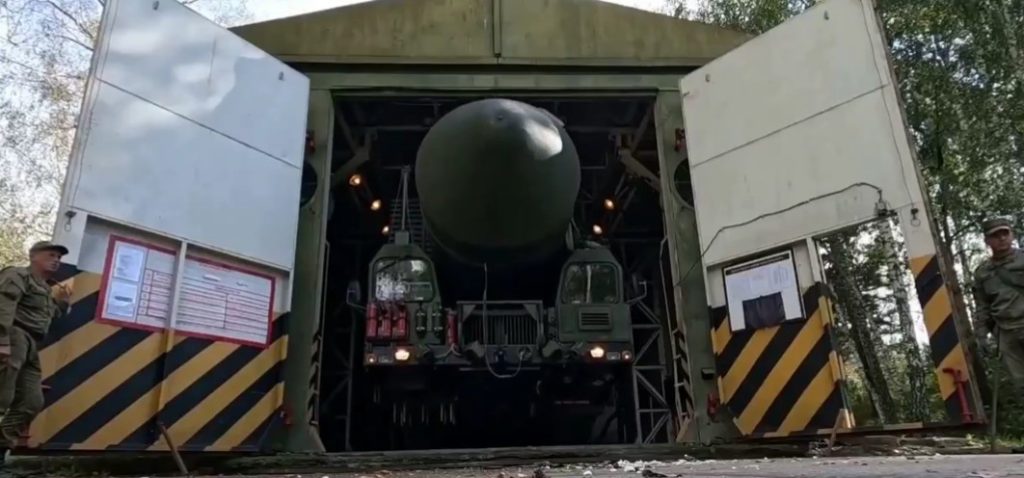The Video shows the Yars missile being deployed in Novosibirsk, Siberia.
Others are reading now
Russia has reportedly positioned its mobile nuclear launchers on combat patrol routes, according to the state-run TASS news agency.
Preparing for Long-Term Field Missions
This development comes at a time when military tensions are escalating, particularly in light of the ongoing conflict in Ukraine. The Russian military is inspecting equipment to prepare for “long-term field missions,” indicating a heightened state of readiness.
Recent footage shared by Russian media showed intercontinental ballistic missile (ICBM) launch systems, specifically the Yars missile, being deployed in Novosibirsk, Siberia.
These actions are part of Russia’s strategy to bolster its nuclear deterrent. The Russian Defense Ministry announced that mobile missile units are being moved into the field for patrolling and training missions, anticipating the potential for conflict.
Also read
After Modified Nuclear Doctrine
The Yars missile system, known as the RS-24 (NATO designation SS-29), boasts an impressive range of up to 7,500 miles (12,000 kilometers) and a precision of 820 feet (250 meters).
It can be transported via truck or housed in silos, making it a versatile threat. The first Yars regiment was established in 2011, with additional battalions entering service as recently as December 2023, according to Digi24.
Military expert Oleg Zhdanov mentioned that these movements might simply be part of regular training or equipment checks. The Russian agency noted that personnel are also tasked with implementing camouflage and combat protection, as well as addressing potential sabotage threats.
Since the onset of the invasion of Ukraine in February 2022, President Vladimir Putin has made ambiguous threats regarding the use of nuclear weapons.
Recently, he modified Russia’s nuclear doctrine to include scenarios where nuclear weapons might be employed against non-nuclear states supported by nuclear powers, hinting at the aid provided to Ukraine.
Experts believe that while Putin’s threats are alarming, they do not necessarily indicate a readiness to deploy tactical nuclear weapons on the battlefield. Many analysts view these announcements as part of a strategy to maintain attention on Russia’s military capabilities in international news cycles without signaling an imminent change in policy.



